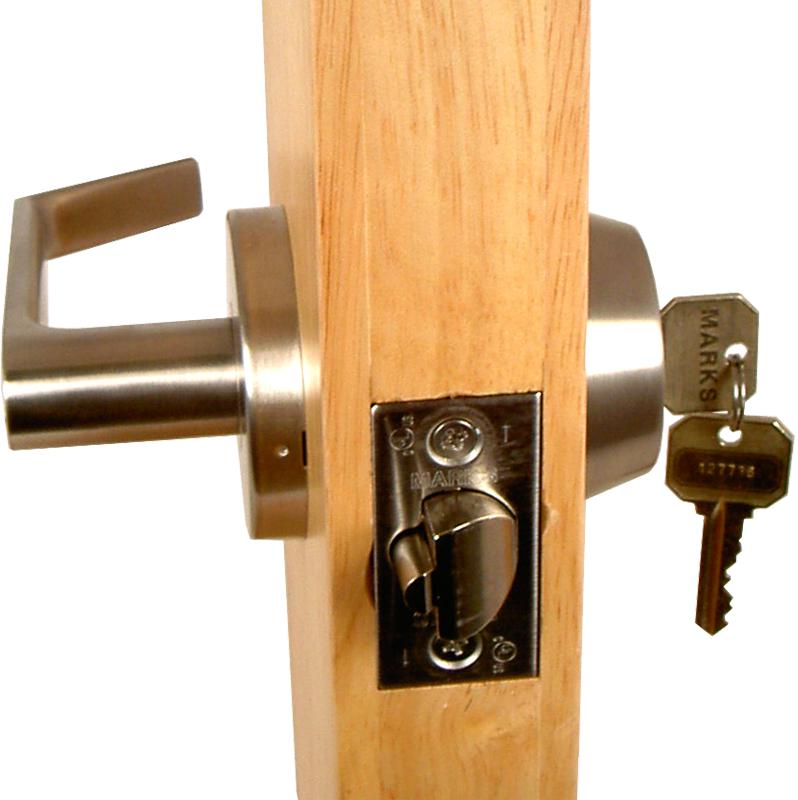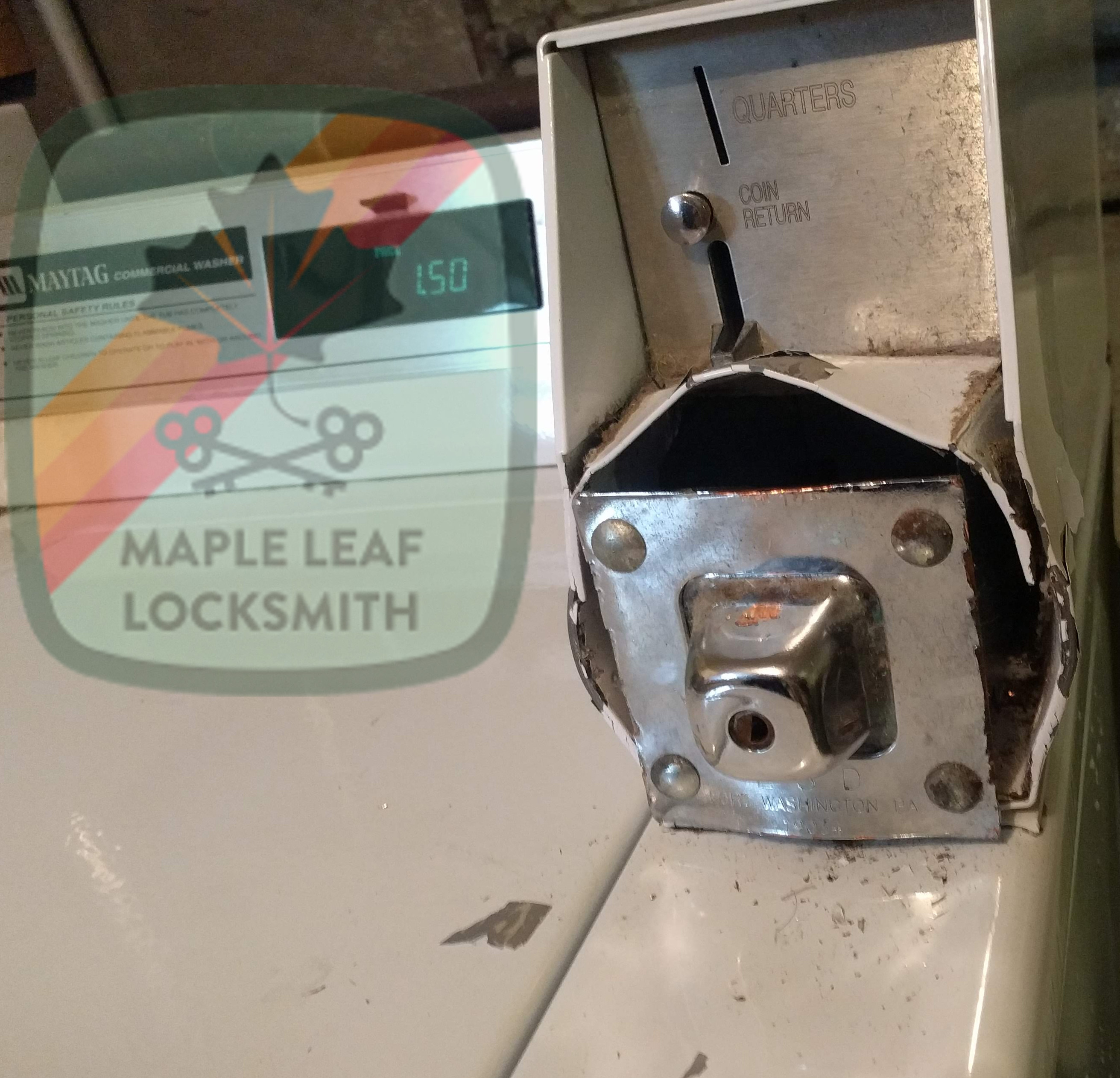
Laundry rooms and mail rooms are popular to break into in Seattle right now. I get a few calls a week about this problem. At night nobody is around and there is probably more than $50 in quarters inside the machine’s coin box, making this an attractive target for people who need some quick cash for some heroin or meth.
Typical communal laundry rooms in Seattle are secured with nothing more than a doorknob. Junkies have discovered that these doorknobs can be forced open with a pair of vice grips or a pipe wrench. This unfortunately works on even very expensive knobs, such as the Schlage D series which costs over $400. Sometimes the doors to these rooms are outside, making these rooms even more vulnerable. I can secure your laundry room door to make it much harder to get at your machine.
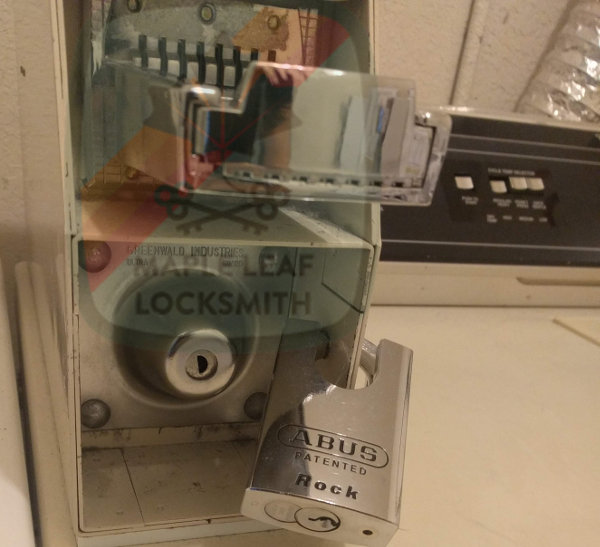
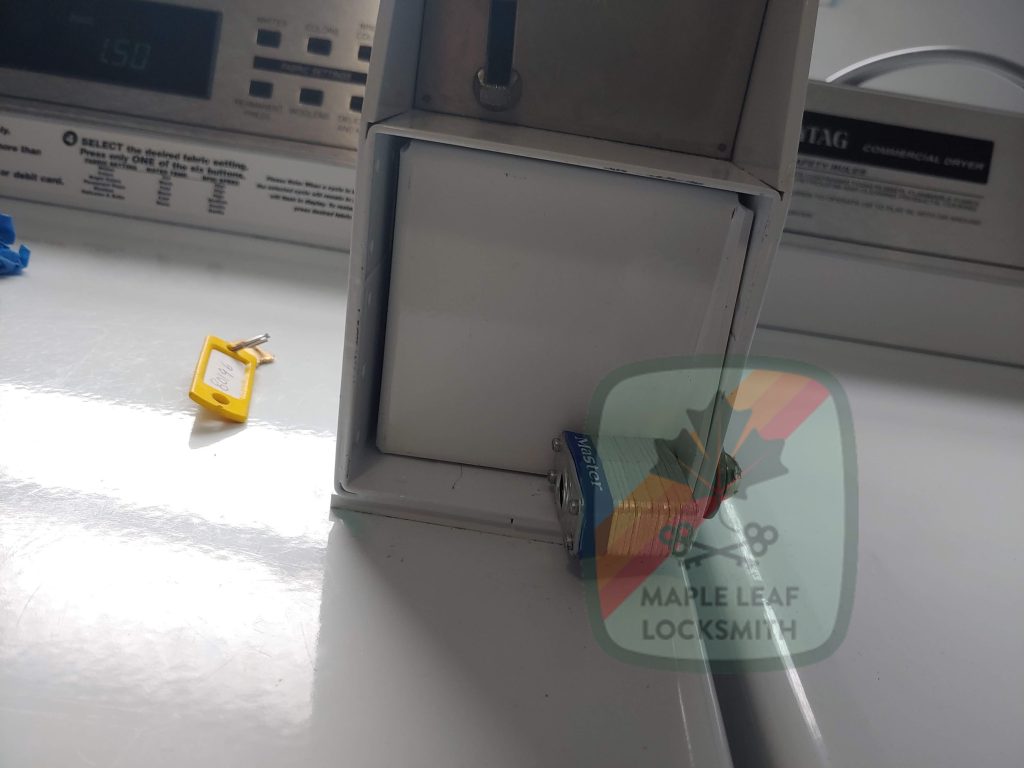
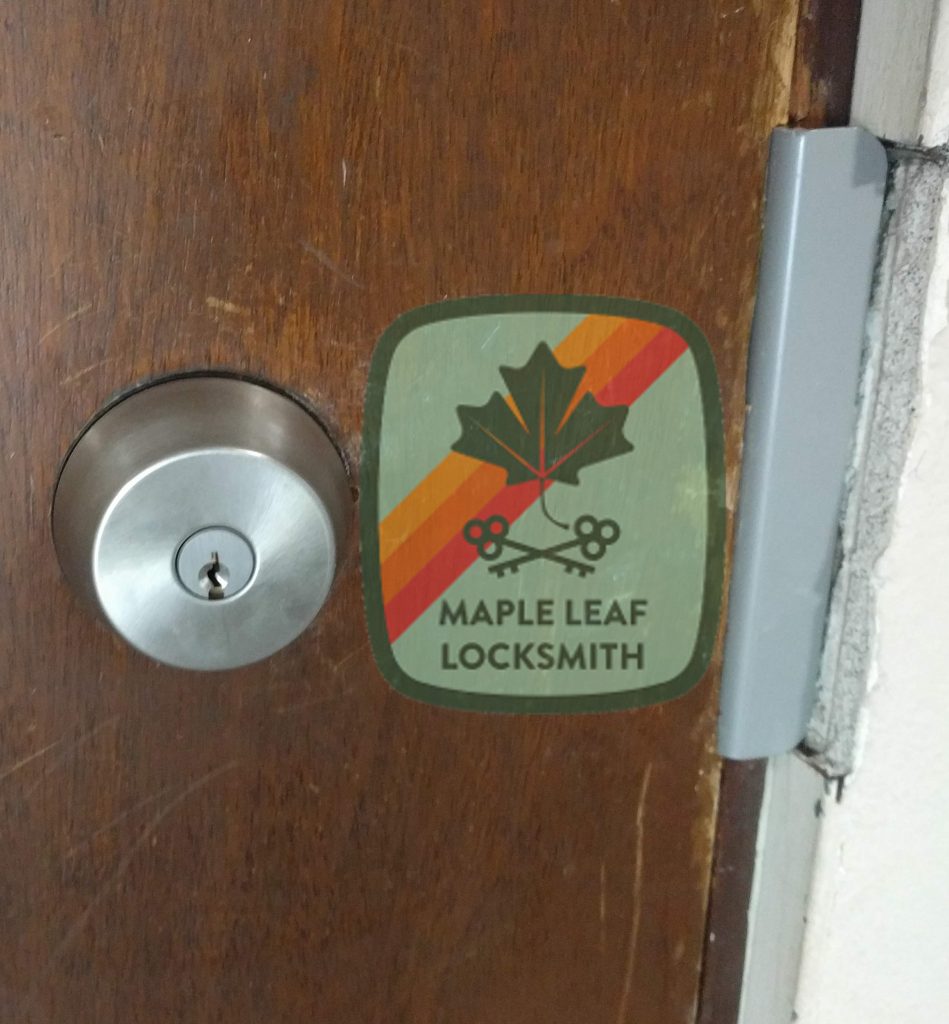
The best way in my opinion to do this is to replace the doorknob with a lock that is not vulnerable to attack with a wrench. This means either a panic bar and rim cylinder, a Marks nightlatch, or a knob or lever with a shroud.
If you are getting break-ins and you already have a solid door that shuts properly then here is a plan to secure it. Some of these may not apply to your door. Read on for an explanation of why you may want these things.
- $65 for a weekday service call in addition to…
- $270 for a Marks gate lock, or
- $300 parts and labor to install a lever guard on an existing always locked lever
- $20-50 labor to replace the lock on your door with the new one
- $125-500 for a door closer depending on your door and door frame if you don’t already have one
- $50 labor to install a door closer on either a wood or metal door if you don’t already have one
- $50-120 for a new lock cylinder with a restricted keyway, not including keys
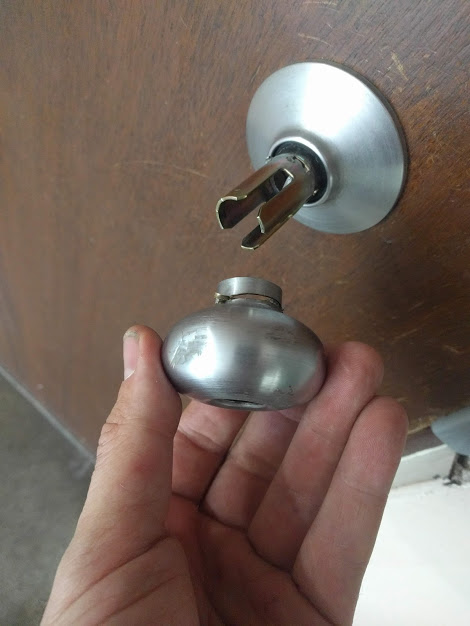
Seattle is getting hit by a petty crime wave. As you might imagine from my job description my finger is on the pulse of petty theft and more generally the human condition in King County. Building owners are getting hit pretty hard in a few different places: garages, storage rooms, mail or package rooms, and laundry rooms. The thing that all of these places have in common is that, late at night, nobody is usually in or near them. Thieves of course are attracted to this and will break into cars, storage units, laundry machines or whatever and will have hours to do it between the hours of 3 and 6 am.
There are a few components to physically keeping them out:
- Key control (whether or not criminals have access to the key).
- The door itself.
- The lock on the door.
- The strike on the door frame.
- Whether or not the door is getting shut automatically and the lock is actually engaging.
- Whether or not the lock is protected by direct manipulation such as prying, wrenching, hammering, etc.
I can fix all of these things except replacing the door, though I can do a lot to reinforce a door and door frame. A properly installed door is crucial to building security. If the gap between the door and frame is too great, it is easy to pry open without the addition of an astragal.
No matter how secure your door is it won’t help if thieves get a key. Get a restricted keyway and audit who has how many keys. If they lose the key, for the best security rekey the locks the key worked on. That is expensive, so put it in the lease agreement that they have to pay for this if they lose the key.
Addressing the question of locks, there are a few requirements for buildings open to the public and multi unit residential buildings. Designated exits have to have either a lever or a panic bar, depending on the maximum occupancy of the room near the exit. Unfortunately, this excludes the use of deadbolts.
Deadbolts are also a poor choice because they require that you trust your residents and tenants to turn around and lock the door when they are leaving the room or building. As any property owner will tell you, they just can’t be trusted to secure the building. To properly secure your building, you have to make the doors stupid-proof. This means the doors must automatically close, and they must automatically lock when they close. This means our choices are limited to levers, panic bars, and special hybrid locks like gate latches.
For the lock to work correctly, the door first has to be shut. This is most often done with the help of an automatic door closer. It will shut the door slowly but firmly without slamming. This ensures that as long as nobody puts something in the way of the door it will shut until the lock engages in the door frame.
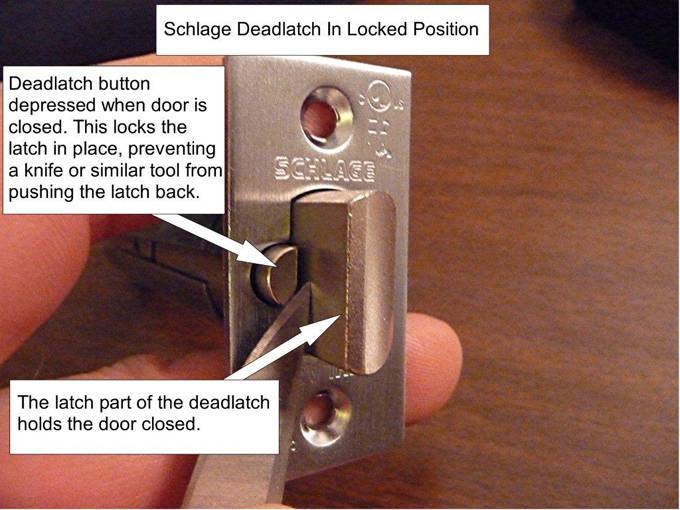
For the lock to engage, a strike plate must be installed in the door frame correctly. If it is installed wrong the door might not latch shut, leaving it unlocked, or the deadlatch might not engage, meaning somebody might open the door with a credit card or a butter knife.
We can mitigate this weakness by either moving the strike plate, grinding the strike plate, or installing a latch protector or an astragal. One limitation of many of the doors on a modern multi unit building is that the doors will be fire doors, meaning that we can’t legally move strike plates or grind strikes. Adding or modifying hardware on these doors invalidates their fire rating. Any hardware that is added to such a door must be approved by the entity that issued the fire rating. If you want hardware installed on a fire door I will not do so unless you accept the full responsibility for the fire door and its UL rating.
If you’re still with me, here is the part where we get to solutions: how to keep criminals out with the perfect door. If you already have a correctly installed door, we need a door closer, a deadlatching lock with no knob or lever on the outside, and maybe a latch protector or astragal covering the gap between the door and door frame blocking direct manipulation of the lock’s deadlatch.
The best locks for this purpose on a standard wood or hollow metal door are a panic bar and lock cylinder mounted flush to the surface of the door for exits of rooms rated for occupancy of 50 people or above, or the Marks gate latch with a lever on the inside and what appears to be a deadbolt on the outside. This lock is much more resilient to efforts of forced entry. A pipe wrench won’t force this lock open. Neither will a pipe or brute strength. Even a hammer won’t force this open, unlike levers and doorknobs. These locks are still ADA compatible and meet fire safety rules for rooms rated less than 50 occupancy.
